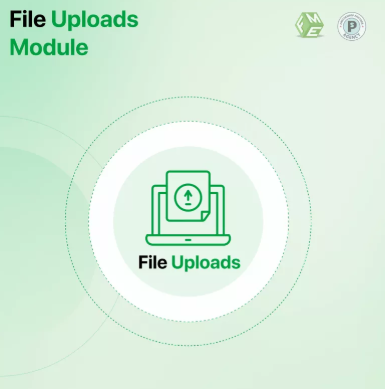As the digital world shifts towards mobile-first usage, e-commerce businesses must adapt. Today, more than half of all web traffic originates from mobile devices, making responsive design a vital element for online success. PrestaShop, a leading e-commerce platform, provides store owners with tools to adapt to this evolving trend. In this context, features that enhance user interaction—such as allowing customers to upload files—must be easy to use, mobile-friendly, and SEO-conscious.
If you sell personalized products or require additional documents from your customers, enabling the prestashop upload file feature becomes essential. Whether it’s for product customization, ID verification, or attaching additional notes, giving users the ability to upload files adds a layer of interactivity and trust to your store.
Why File Uploads Matter in E-commerce
Online shoppers increasingly expect personalized services. In many product niches—like printing, fashion customization, event management, and ID-based services—customers need to send specific files to complete their orders. Enabling file uploads allows you to:
Collect custom images or text for personalization
Receive official documents securely
Improve communication during checkout
Offer a smoother, more efficient shopping experience
More importantly, implementing this feature in a mobile-friendly and intuitive way ensures that users on smartphones or tablets can easily upload files without performance issues.
Mobile-First Design Considerations
Incorporating file upload functionality must align with responsive web principles. A mobile user should have the same ability and convenience as a desktop user. That means:
Input fields and upload buttons should scale correctly on smaller screens.
Upload progress bars or confirmations should be readable on mobile.
File limits and accepted formats should be clearly communicated.
Upload forms should use minimal resources and avoid heavy scripts.
A mobile-optimized prestashop upload file setup ensures that the feature enhances usability instead of creating friction.
Step-by-Step Guide to Enable File Upload in PrestaShop
1. Use PrestaShop’s Built-In Customization Features
PrestaShop natively allows file uploads on product pages through product customization settings. Here’s how to activate it:
Go to Catalog > Products in your PrestaShop back office.
Edit the product where you want to allow uploads.
Navigate to the Options tab.
Under Customization, set the number of file fields (e.g., “1” for one upload field).
Save the changes.
This method works well for simple upload needs, such as uploading images for personalized mugs, t-shirts, or prints.
2. Use a Dedicated Module for More Complex Needs
For advanced file upload needs—such as attaching files during checkout or in customer messages—consider using a specialized PrestaShop module. Look for a module that offers:
Mobile responsiveness
File type and size restrictions
Progress indicators
Integration with order pages
Customer message file support
Once installed via Modules > Module Manager, configure the module to display file upload fields at the product level, cart, or checkout based on your workflow.
SEO Considerations for File Upload Features
Even though file uploads are not directly crawlable by search engines, they can influence your store’s performance in ways that matter for SEO:
Responsive design ensures file upload fields are usable across all devices, reducing bounce rates.
Fast loading speeds are preserved when uploads are handled efficiently without bloated scripts.
Improved UX boosts engagement, increasing time-on-site and conversion—factors that indirectly impact rankings.
A well-optimized prestashop upload file interface contributes to overall site quality, which aligns with Google’s mobile-first indexing priorities.
Making File Uploads Mobile-Friendly
Here are some tips to keep file upload functionality user-friendly for mobile users:
Use large, tap-friendly buttons for uploading files.
Clearly indicate allowed file types (e.g., JPG, PDF, PNG).
Display success/error messages in readable fonts.
Provide optional previews of uploaded content where applicable.
Ensure forms are light and don’t slow down page speed.
Testing your file upload process on various mobile devices and screen sizes is essential to catch issues before they affect user experience.
Common Use Cases for File Uploads in PrestaShop
Personalized Product Orders: Customers upload photos or logos for printing.
Verification Documents: Upload ID scans for age-restricted products.
Artwork Submission: Artists upload designs for competitions or digital products.
Medical/Service Forms: Attach prescriptions, service requests, or intake forms.
Custom Notes or Receipts: Customers provide additional instructions or proof of payments.
Enabling these interactions can set your store apart in terms of convenience and customer satisfaction.
Security Measures for File Uploads
Allowing users to upload files can expose your site to risks if not managed properly. Protect your PrestaShop store with these best practices:
Limit accepted file types (e.g., JPG, PNG, PDF).
Set maximum file size limits.
Sanitize and rename uploaded files to avoid executable scripts.
Store uploaded files in non-public directories.
Regularly update file upload modules and monitor logs.
Secure and efficient handling of file uploads will maintain your site’s performance and protect customer trust.
Testing and Monitoring
Before going live, test the entire file upload flow:
Upload various file types and sizes.
Simulate low-speed mobile connections.
Check error handling and confirmation messages.
Monitor upload speed and site performance.
Continually evaluate the user experience to make improvements as mobile technology and user expectations evolve.
Conclusion
Incorporating the prestashop upload file feature into your store is a simple yet powerful way to elevate customer experience, especially in industries where personalization or document exchange is critical. Done right, it supports your mobile-first strategy, improves site functionality, and aligns with modern user expectations.
Whether you use PrestaShop’s built-in tools or a third-party module, remember to focus on responsiveness, security, and SEO best practices. As e-commerce continues to evolve in a mobile-dominated world, these small enhancements can make a significant impact on your store’s success.


 :
: